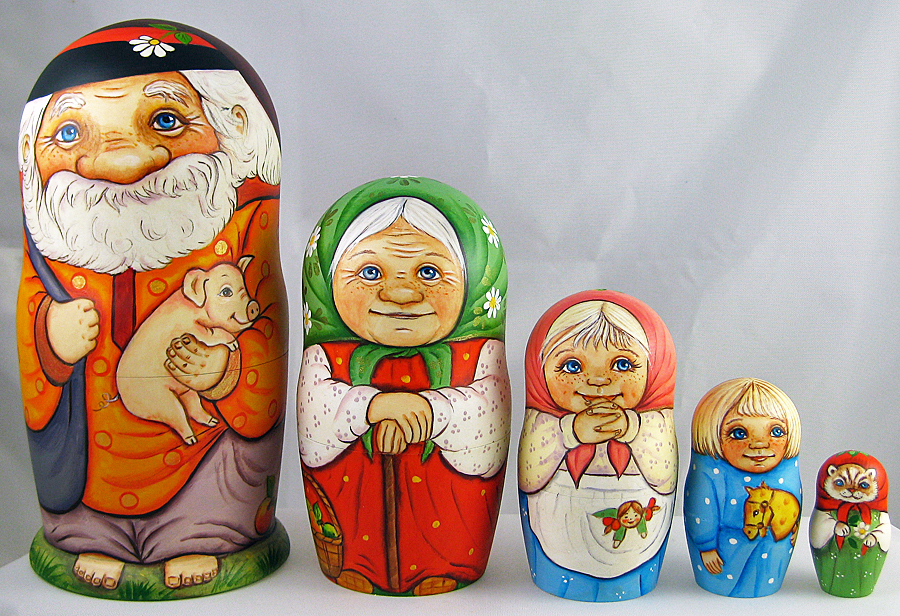The matryoshka nesting doll is certainly the most popular souvenir from Russia. Originally designed as a children's toy, matryoshkas have bridged the gap between folk art and fine art. Each Russian matryoshka nesting doll is hand turned on a lathe by a woodcraft specialist and is then hand painted. Dolls for children to play with are still being produced in many different styles and designs, however, finely painted dolls for collectors are now being made by highly skilled artists. Some of the finest, museum quality dolls can sell for several thousand dollars. The variety of nesting dolls now available is amazing. This is due to the new economic and creative freedom that the artists are enjoying in a post Soviet Russia. For more information about Russian matryoshka nesting dolls please read Matryoshka history and Matryoshka Collectors Guide.
Porcelain dolls from Russia are created with a wide variety of traditional costumes representing the styles characteristic of different provinces and regions of Russia. Folk costumes of the Northern and Central provinces are represented by a white, long sleeve blouse, a "sarafan" (long jumper dress), and a "kokoshnik" (half-moon shaped headpiece). A short jacket, with either long or short sleeves is often a part of such a costume. Traditionally, the costume is decorated with gold and silver thread embroidery on velvet and brocade, floral designs, and decorative fabrics. Pearls and glitter are used to decorate the collar and cuffs of the blouse and the hem of the sarafan.
Costumes of the Southern regions of Russia consist of a wide-sleeved blouse and a long, plaited or striped skirt - "panyova", which is often complemented by an apron, and a small rectangular richly decorated headpiece called a "soroka." Skillfully embroidered lace and decorative fabrics are used to decorate the costume. Geometrical design and distinct horizontal lines are characteristic of this style. The red colors dominate in the fabrics with black and white ornamentation. The sleeves of the blouse and the apron have the most decoration.
The costumes of these dolls are authentic reproductions of 18th and 19th century wardrobes. Each costume has been hand-sewn following traditional designs. Many of the larger dolls have costume details that may include underclothing such as pantaloons, and fancy boots or shoes. The faces of the dolls are hand painted.
Nevalashka means "never falls down" in Russian. Originally these weighted, round bottomed dolls were designed for toddlers to play with. The dolls are meant to be knocked over, ringing a bell inside, and then they pop back up. With the demise of the Soviet Union new economic and artistic freedom has come to Russian nevalashkas have also become works of art, displaying the myriad talents of their creators.
The theme and character of each nevalashka doll is a reflection of the individual artist. Many nevalashka artists also paint the more familiar matryoshka dolls and like the matryoshka dolls, nevalashka dolls are made of wood and are hand painted. The wood used for most dolls, toys, and folk art is linden wood which has a very nice light color and is good for carving.
Inside each nevalashka is a set of thin metal rods that are of varying lengths to provide a pleasing musical sound when they are struck by the hanging metal "clapper" inside. The metal clapper is frequently an old Soviet coin.




